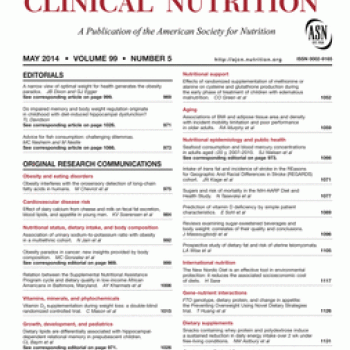Publication Information

Background: A growing literature has linked early childhood growth to later-life cognition and schooling outcomes in developing countries. Although existing evidence suggests that children's ability to recover from early growth delays in later childhood is limited, longitudinal studies on the persistence and risk of growth faltering beyond age 5 y remain scarce.
Objective: Using longitudinal data recently collected from 4 developing countries as part of the Young Lives study, we investigated catch-up growth in children between the ages of 8 and 15 y and the effects of growth during this late-childhood and early-adolescence period on schooling and developmental outcomes.
Design: We analyzed the associations between children's physical growth and development by using longitudinal data from 3327 children aged 8-15 y collected in Ethiopia, India, Peru, and Vietnam as part of the Young Lives project.
Results: The study yielded 2 main results. First, 36% of children stunted at age 8 y managed to catch up with their peers by age 15 y, and those who caught up had smaller deficits in cognitive scores than did children who remained stunted. Second, physical growth faltering was not restricted to early childhood but rather affected a substantial share of children in the 8-15-y age range, with large negative consequences for cognition and schooling outcomes.
Conclusion: The results from this study suggest that child development in developing countries is a dynamic process offering continued opportunities for children to catch up during adolescence and sustained risks for children to fall behind in their developmental trajectories.
Article written using Young Lives data from the UK Data Archive by researchers from the Harvard School of Public Health, Boston.
ReferenceGuenther Fink and Peter C. Rockers (2014) 'Childhood Growth, Schooling, and Cognitive Development: Further Evidence from the Young Lives Study', American Journal of Clinical Nutrition (early on-line publication).
The full version of the article is available on the journal website.

Background: A growing literature has linked early childhood growth to later-life cognition and schooling outcomes in developing countries. Although existing evidence suggests that children's ability to recover from early growth delays in later childhood is limited, longitudinal studies on the persistence and risk of growth faltering beyond age 5 y remain scarce.
Objective: Using longitudinal data recently collected from 4 developing countries as part of the Young Lives study, we investigated catch-up growth in children between the ages of 8 and 15 y and the effects of growth during this late-childhood and early-adolescence period on schooling and developmental outcomes.
Design: We analyzed the associations between children's physical growth and development by using longitudinal data from 3327 children aged 8-15 y collected in Ethiopia, India, Peru, and Vietnam as part of the Young Lives project.
Results: The study yielded 2 main results. First, 36% of children stunted at age 8 y managed to catch up with their peers by age 15 y, and those who caught up had smaller deficits in cognitive scores than did children who remained stunted. Second, physical growth faltering was not restricted to early childhood but rather affected a substantial share of children in the 8-15-y age range, with large negative consequences for cognition and schooling outcomes.
Conclusion: The results from this study suggest that child development in developing countries is a dynamic process offering continued opportunities for children to catch up during adolescence and sustained risks for children to fall behind in their developmental trajectories.
Article written using Young Lives data from the UK Data Archive by researchers from the Harvard School of Public Health, Boston.
ReferenceGuenther Fink and Peter C. Rockers (2014) 'Childhood Growth, Schooling, and Cognitive Development: Further Evidence from the Young Lives Study', American Journal of Clinical Nutrition (early on-line publication).
The full version of the article is available on the journal website.

